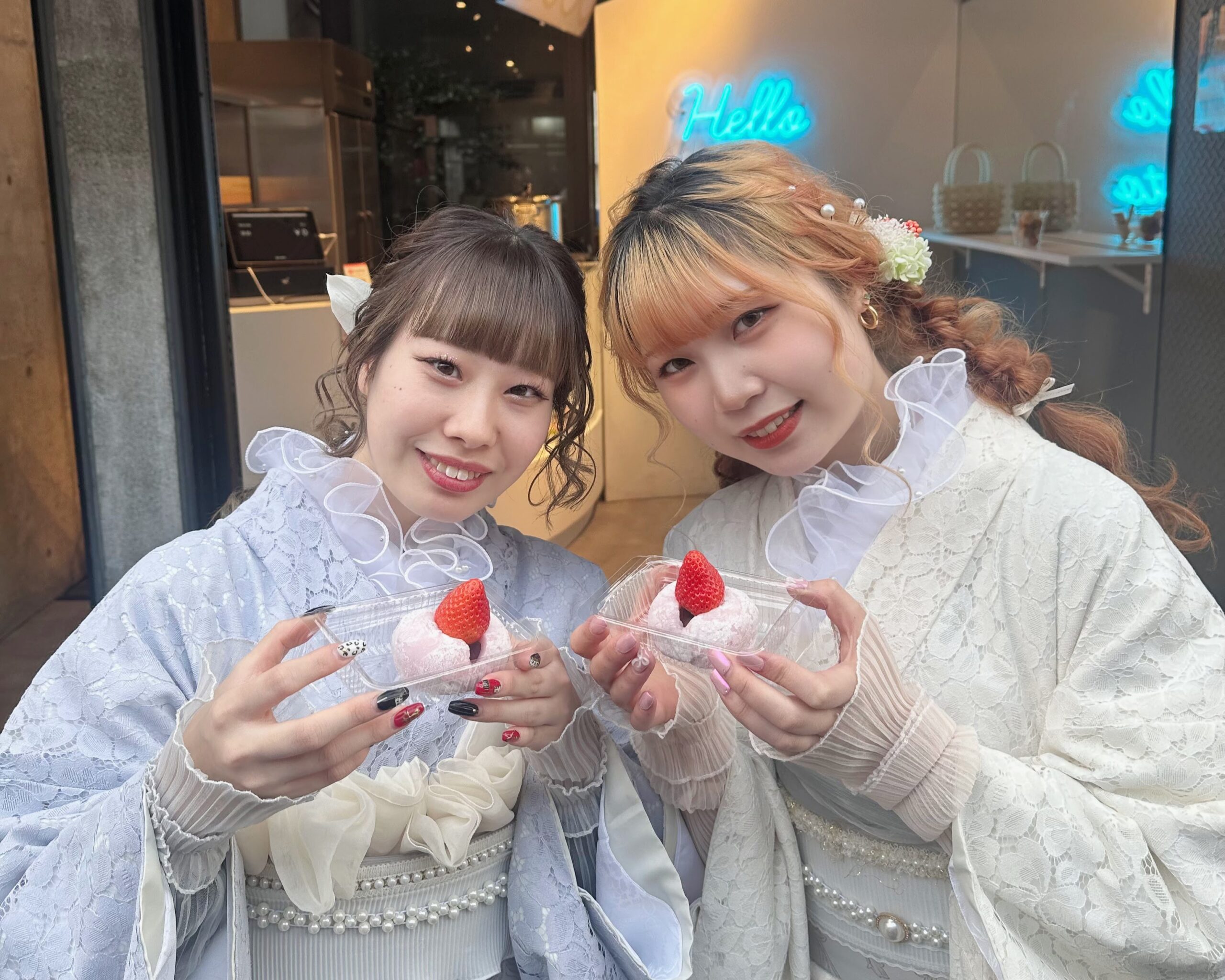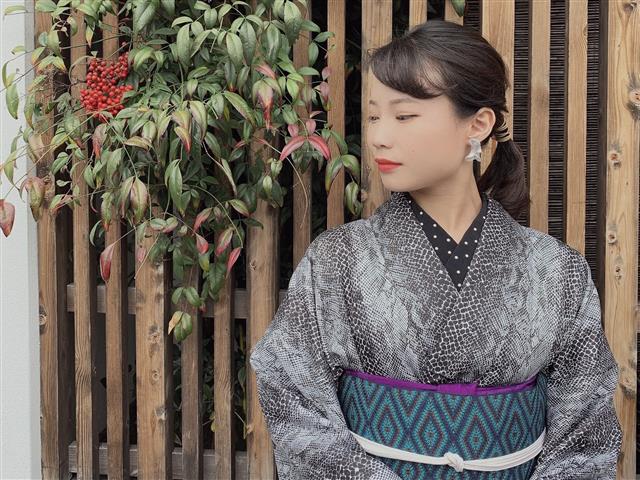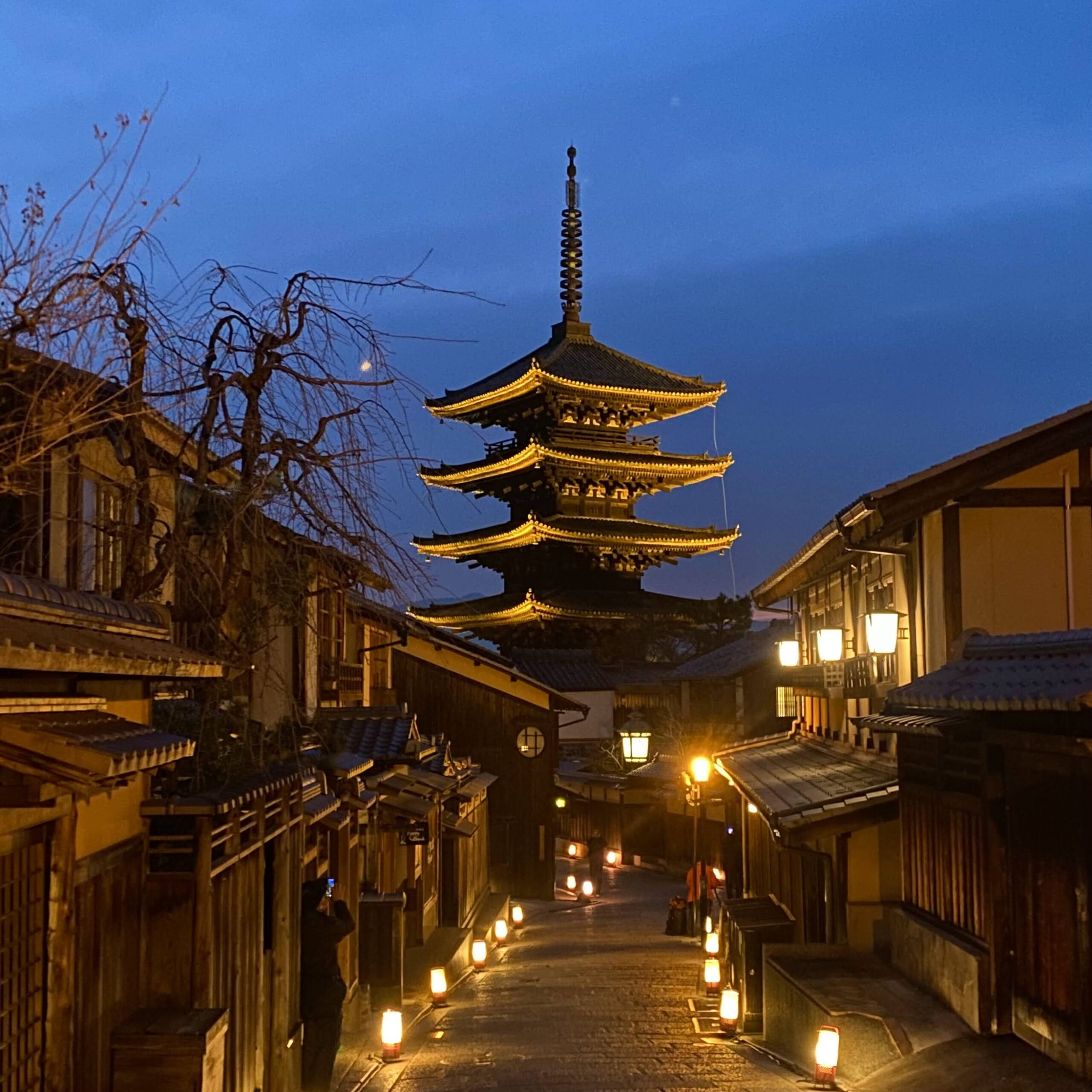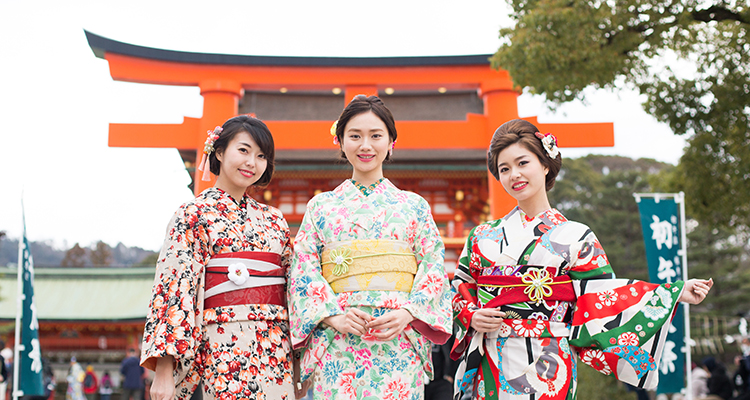
special fearure・column
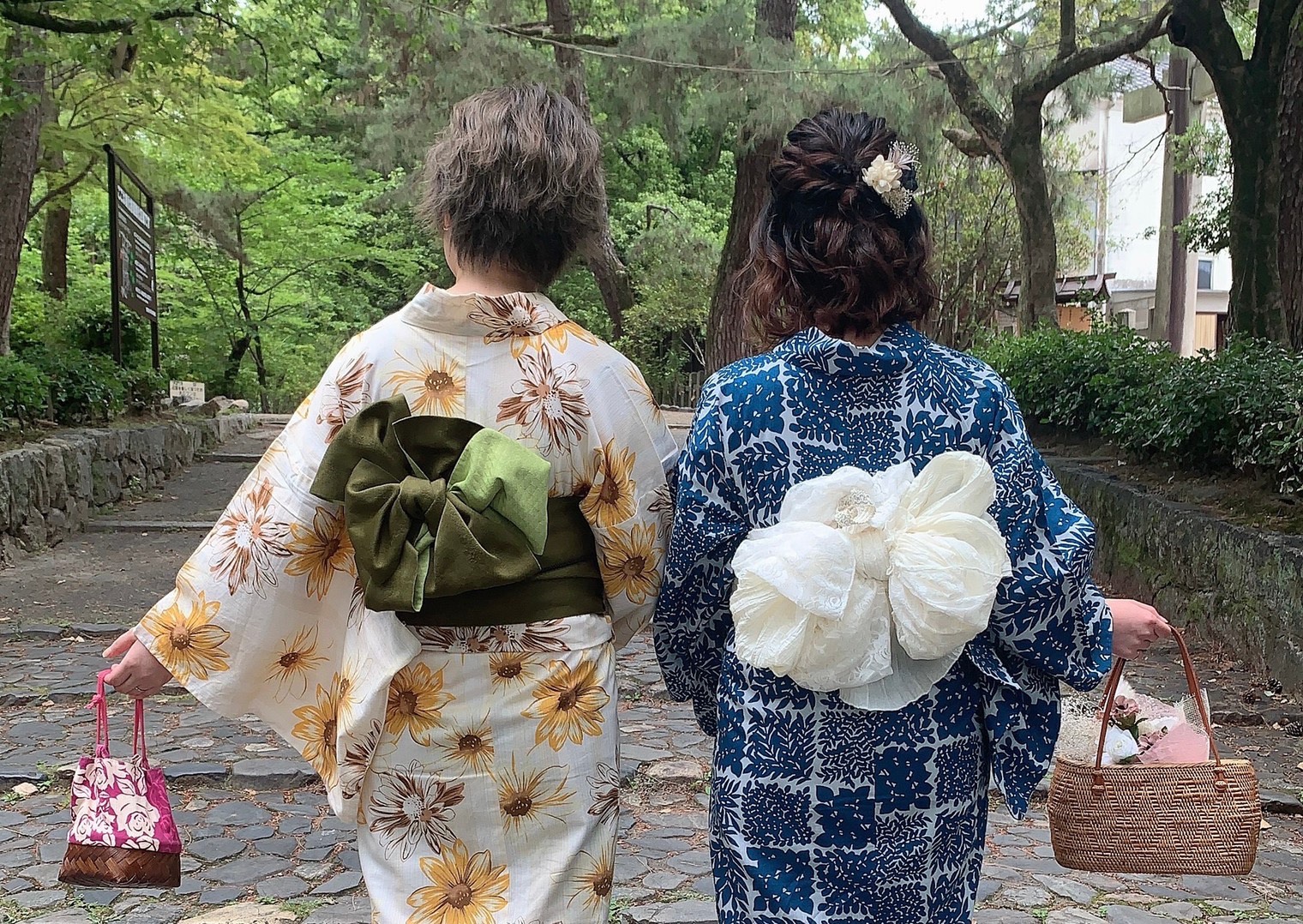
Kimono and Four Seasons【What are the rules of Kimono in each season? 】
- ◆Kimono is a culture of enjoying the four seasons
- ◆Seasonal rules for kimono
- Awase: worn from October to May
- Hitoe: worn in June and September
- Usumono worn from July to August.
- ◆The change of clothes is not only for kimonos?
- The obi sash is broadly divided into two categories according to time of year.
- Small items also to be appropriate for the season.
- ◆The seasonal attire of each season
- Winter Wear Awase [photo/left].
- Single layer garment Hitoe for spring and early summer [photo/right].
- Thin summer attire [photo/left].
- Single layer garment for autumn [photo, right].
- ◆Yukata is a kimono?
- ◆Enjoy kimono to the fullest by my own rules!
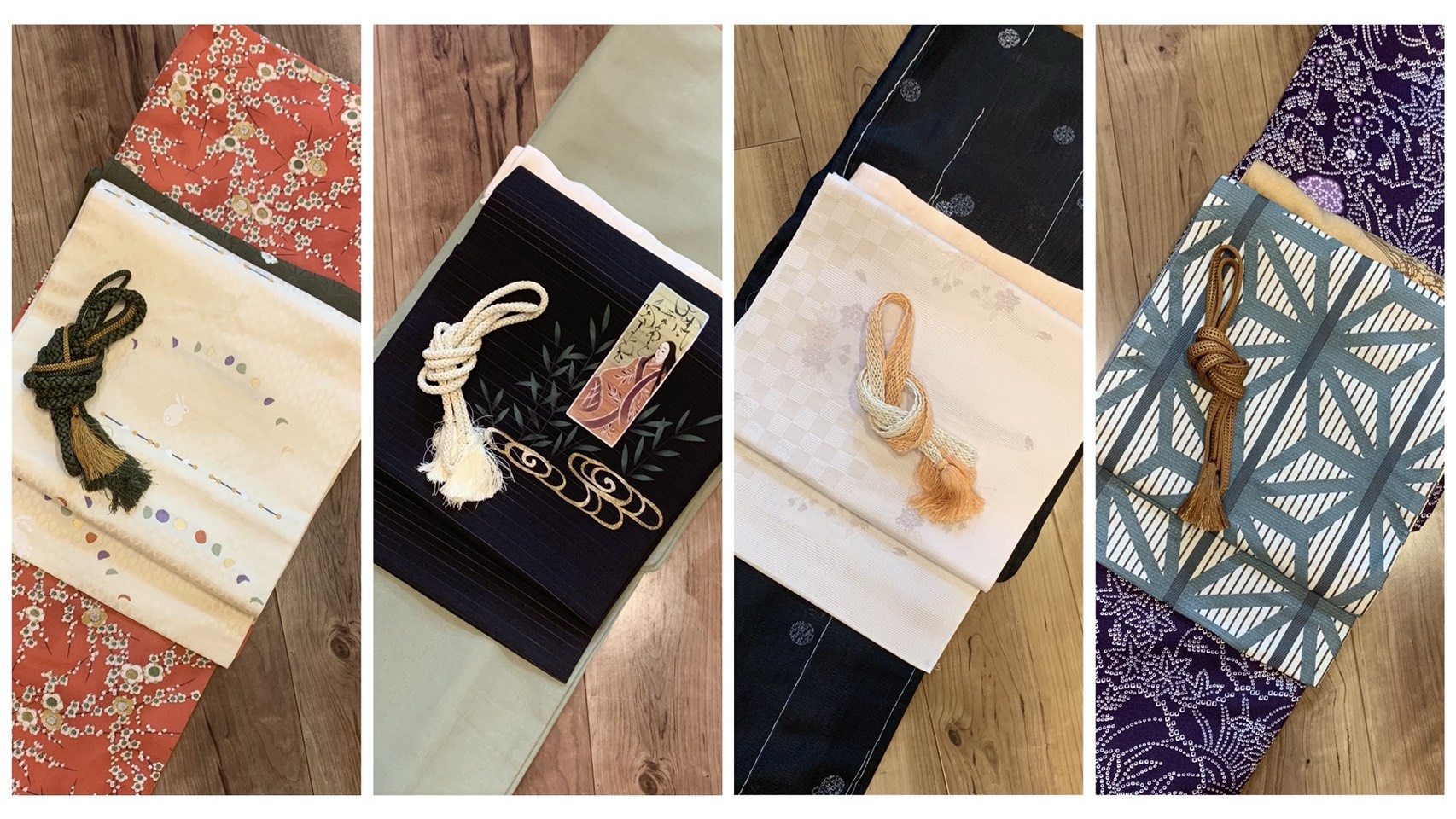
◆Kimono is a culture of enjoying the four seasons
As we approach the end of June, most of you may already be wearing summer clothes.
Although we no longer strictly “change clothes seasonally” as we used to do in the past,
there is a custom of “changing clothes” for kimonos.
Changing clothes is not only to replace kimono in a different season, but also to develop a sense of a season,
care and management of clothes, and to learn how to keep things tidy.
It is also a way to pass on the “spirit of using things carefully and for a long time”.
Please try to go out with a more beautiful coordination by knowing the good points of kimono of each of the four seasons.
◆Seasonal rules for kimono
The custom of changing clothes is said to have been introduced from China during the Heian period (794-1185).
It has undergone numerous changes since then, until it has come to be as follows.
October 1 - May 31: Awase
June 1 - June 30 : Hitoe (single layer)
July 1st - August 31st : Usuimono (Thin)
September 1 - September 30 : Hitoe (single layer)
Awase: worn from October to May
Awase is tailored with a lining that prevents the fabric from being damaged.
Of course, the lining keeps the garment warm,
But it can also be glimpsed when you walk, giving a playful touch to your outfit.
It is a part that can only be seen at a glimpse, but by paying attention to this part, the impression of the outfit will change and the sense of stylishness will definitely increase.
It is sure to increase your sense of stylishness.
Some people wearawase for all seasons because of its weight and photogenic qualities.
Hitoe: worn in June and September
Hiote is an unlined kimono, worn during the change of seasons in June and September.
It is not see-through though, which makes it perfect for wearing when it is neither hot nor cold.
If hot or cold days continue, there is no problem to wear a Hitoe kimono earlier or later than that.
In that case you can match it with the summer version of obi sash and accessories in June,
and winter version ones in September.
Usumono worn from July to August.
During hot summer season, people wear light Usumono, tailored from a fabric called Sha or Ro,
which has a translucent feel due to its coarser thread density and better air permeability.
Sha is a fabric woven with a karami weave, while Ro is woven with a combination of plain weave and karami weave, and is used for formal wear too.
◆The change of clothes is not only for kimonos?
The obi sash is broadly divided into two categories according to time of year.
Obi can be broadly classified into two time periods.
Summer obis are worn during summer, from June through September of lingering summer heat.
It is to be worn with light summer kimonos or Hitoe, and is rarely combined with Awase kimono.
Its unique transparency and cool impression distinguish it as a summer use.
Sha, Ro and Ra are made of transparent woven fabrics similar to kimono, making them light and breathable.
Hemp is often used as the material.
Mainly, their design give a light and cool impression.
You can have fun thinking about how to coordinate it with a summer kimono, giving a unique to summer look.
Winter obi is used in three seasons other than summer. Unlike summer one, it has no transparency.
Because they are used over three seasons, there are a variety of styles to choose from,
so you can have a pleasure of selecting one more suitable for the climate.
Generally, a dyed obi is worn with a woven kimono such as “tsumugi. On the other hand, a dyed kimono is often matched with a woven obi.
Small items also to be appropriate for the season.
Not only the kimono and obi, but also the obiage and obijime that go with them are seasonal.
The summer version is made of a transparent weave and has a transparent pattern, so the difference is obvious when you hold it in your hand.
There are also summer versions in Juban, undergarment as well as sandals and tabi socks . The collars attached to Juban are see-through in summer. Summer wear has a cool appearance and unique texture, so why not try it and feel the difference?
◆The seasonal attire of each season
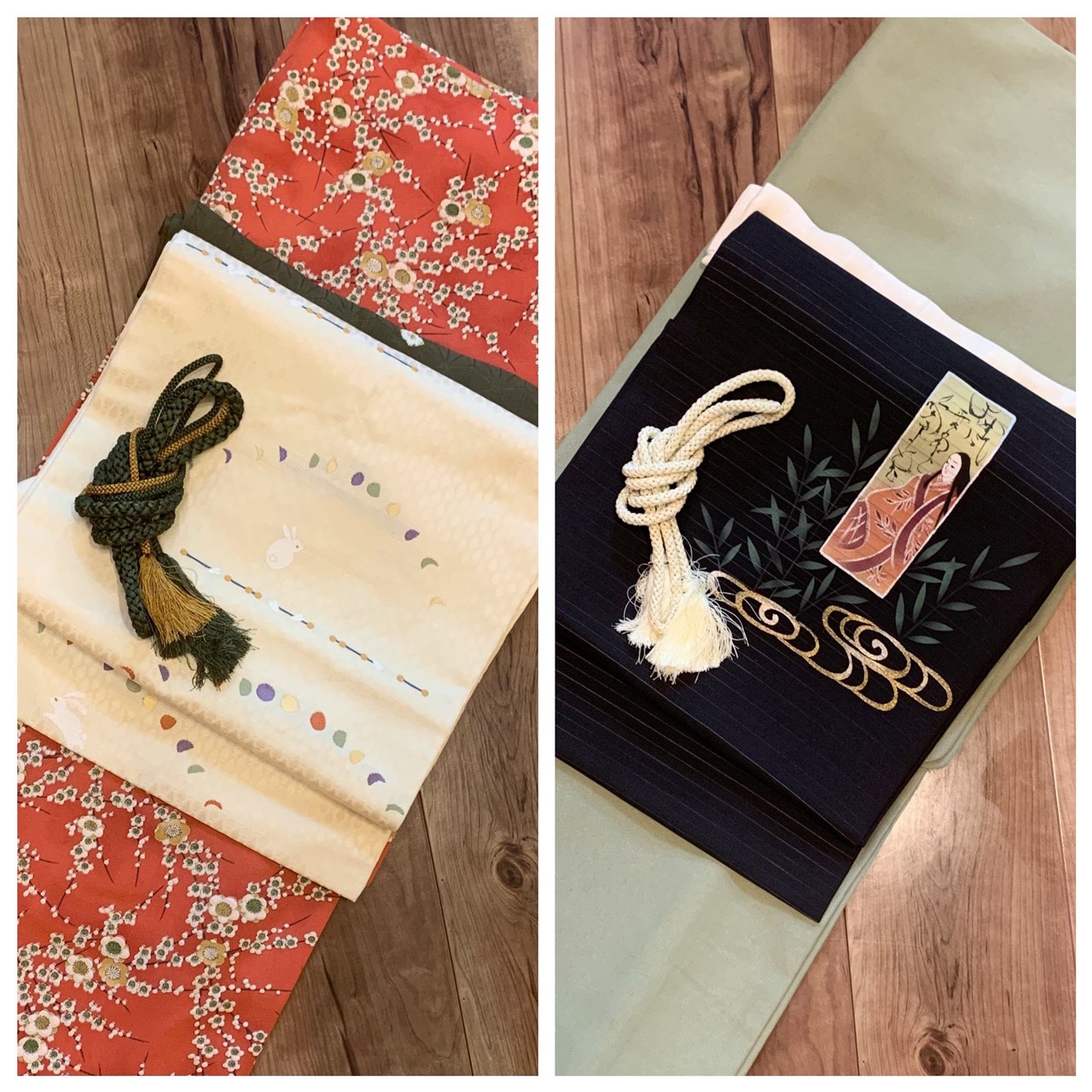
Winter Wear Awase [photo/left].
The red kimono with a cute white rabbit obi. The combination looks very nice in the dignified winter air. A rabbit is looking at the moon, as if she is dreaming of returning to the moon.
Single layer garment Hitoe for spring and early summer [photo/right].
The light-colored obiage and obijime are used with a yellow kimono that evokes the budding of new leaves, and a black obi is used to give a slightly dignified appearance. The obi is a very chic obi with a picture of the Hyakunin Isshu, a set of 100 poems.
Such a fashionable spirit is also a pleasure of kimono.
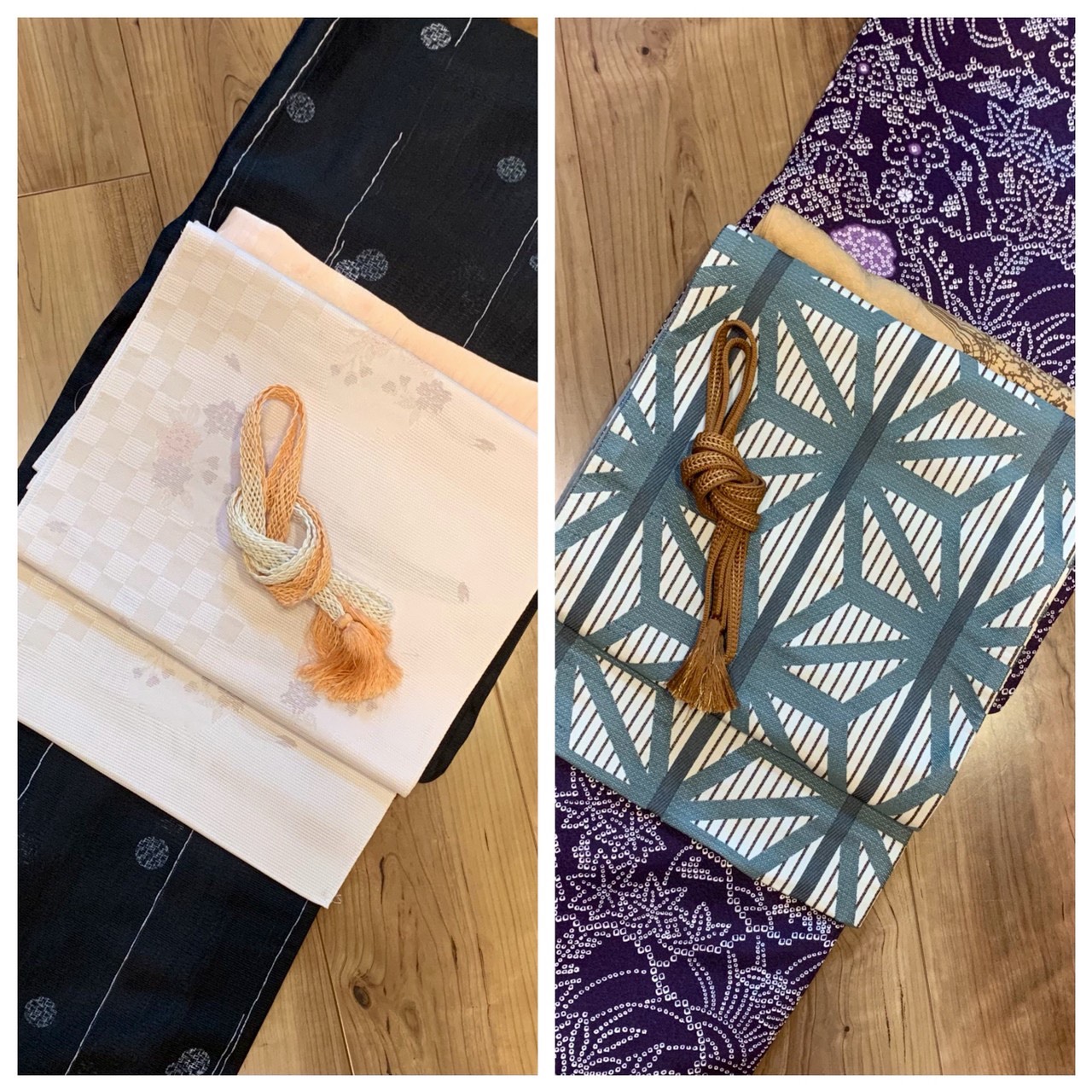
Thin summer attire [photo/left].
In midsummer, how about a black kimono with a white obi sash to make a crisp impression?
The pale orange obiage and the gradient orange obijime also add a sense of unity and crispness to the outfit, eliminating the impression of loneliness.
Single layer garment for autumn [photo, right].
A purple kimono with autumn leaves, a blue-green hemp-leaf obi, a light brown obiage, and a golden brown obijime were worn with autumn in mind.
The hemp leaf is also a traditional Japanese pattern that is used to ward off evil and to wish for the healthy growth of children.
It is a pattern that is often seen these days It is fun to learn the meaning of the pattern in this way.
◆Yukata is a kimono?
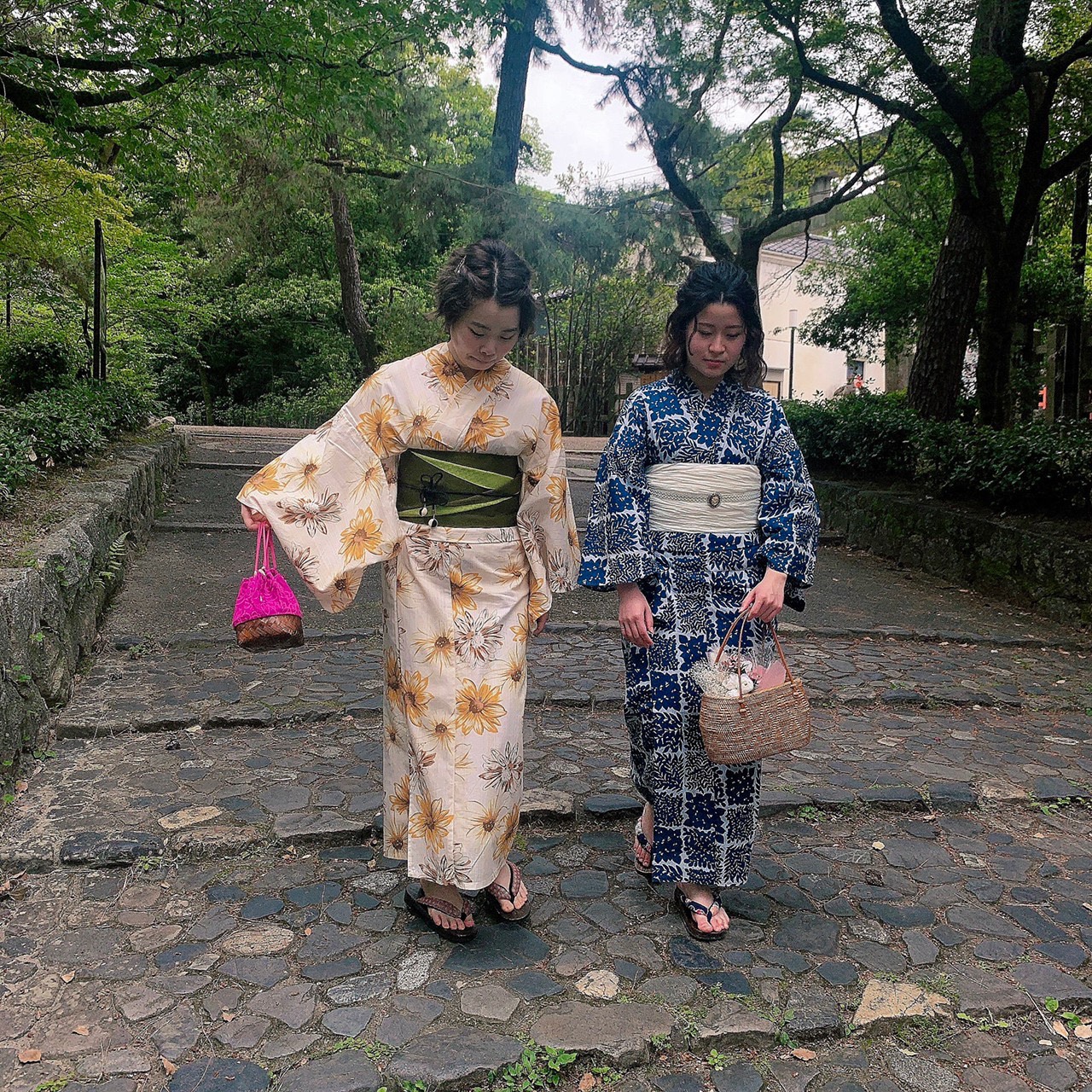
Many people may think of yukata as a summer kimono, but it is said that yukata was originally called “yukatabira” and was worn by aristocrats in the Heian period (794-1185) when they took a steam bath.
As time went by, it became the clothing worn after bathing, and the term was also changed to yukata.
In the Edo period (1603-1867), when the common people started going to public bathhouses, they began to wear yukata after bathing, as the fabric is breathable and absorbed perspiration.
The yukata is still worn at hot spring inns and other such places today.
In recent years, however, it has become a summer look, not just a “bathrobe. In line with this trend, high-grade cotton and linen fabrics such as “cotton koubai” with a crisp feel and “cotton ro” with a translucent feel are being used.
There are also a number of highly functional materials such as cotton/hemp blends, polyester with good colors and vivid patterns, and rayon fabrics with a silky texture and cool appearance.
◆Enjoy kimono to the fullest by my own rules!
It will be more fun to choose a proper kimono and change clothes since you know the rule by season.
If you are wondering which kimono to wear at which time of the year, please use these tips and enjoy the seasonal dress to the fullest.
Let's learn about the difference and become even more beautiful in kimono.
However, these are not absolutes. Seasonal changes in clothing have changed with the times.
These days are getting hotter and hotter even in May. You can have a summer juban undergarment to match to feel the early summer when you see a glimpse of it through a sleeve of a kimono.
There is no right or wrong. We hope you enjoy kimono casually based on whether it is nice or not, or whether you enjoy yourself wearing it or not.
Although, knowing the rules by season and wear a kimono accordingly gives a natural impression. People around you will also be able to feel a sense of season.
For example, for May and June when you wear a single layer of Hitoe, to match with an obi with fresh summer-like colors and materials will look cool. On the other hand for September and October, to have an autumnal taste obi will give a more autumnal impression and look great.
We have talked about four seasons and types of kimono by season so far.
Some of you may be thinking, “What should I do in the end?”
How about trying various kimono and obi at <rental kimono Okamoto> and find out your original coordination?
【Author of this article 】
Rental Kimono Okamoto Yasaka Shrine Branch
301-1 Gion-cho, Higashiyama-ku, Kyoto 605-0073
Phone: 075-532-0510
HP: www.okamoto-kimono.com
Instagram: rentalkimonookamoto
Tiktok: @rentalkimono_okamoto
Facebook: Facebook/rentalkimonookamoto
X(formerly Twitter ):@okamotokimono
lit.link: lit.link/rentalkimonookamoto
Arashiyama Shop
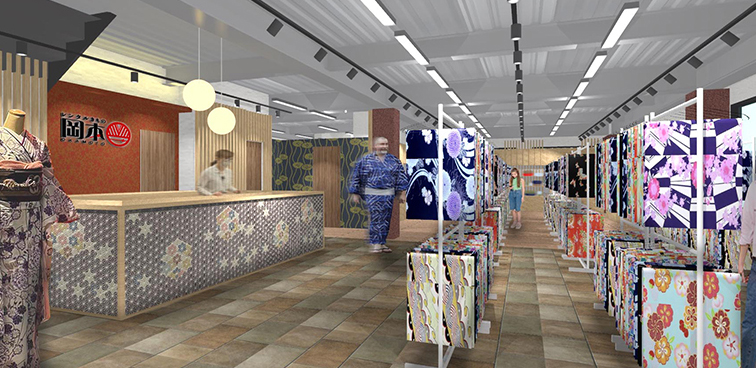
48-4 Saga Tenryuji Kitatsukurimichicho, Ukyo-ku, Kyoto 616-8374, Japan
Phone: +81-75-950-0805 / Fax: +81-75-950-0806 / E-mail: arashiyama@okamoto-kimono.com
Nearest Station: Arashiyama (Randen Line) / JR Saga-Arashiyama Station
Rental Kimono Okamoto - Fushimi Inari shop
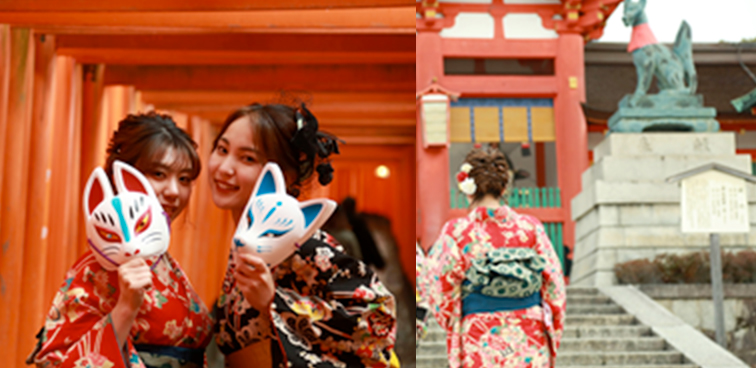
45-1, Fukakusa Inarinakanocho, Kyoto Shi Fushimi Ku, Kyoto Fu, 612-0807, Japan
Tel. +81-75-634-8900 / FAX +81-75-634-8901 / E-mail E-mail fushimiinari@okamoto-kimono.com
Nearest Station: JR Inari Station / Keihan Fushimi Inari Station
Rental Kimono Okamoto Gion Shop
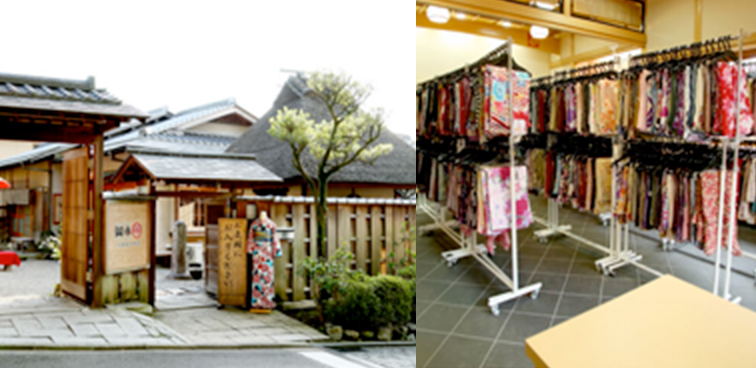
523 Washiocho, Higashiyama-ku, Kyoto 605-0072
Tel. +81-75-531-7890 / FAX +81-75-531-8383 / E-mail gion@okamoto-kimono.com
Nearest stop: City Bus Gion Stop
Rental Kimono Okamoto Kiyomizu Higashiyama Shop
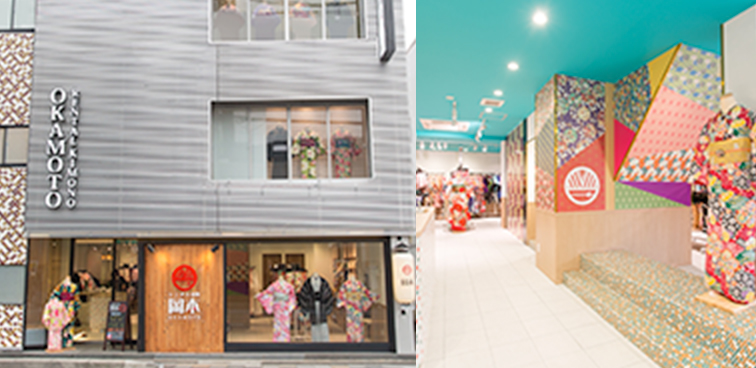
110-9 Tatsumicho, Higashiyama-ku, Kyoto 605-0855
Tel. +81-75-533-8900 / FAX +81-75-533-8910 / E-mail kiyomizuhigasiyama@okamoto-kimono.com
Nearest stop: City Bus Kiyomizumichi stop
Rental Kimono Okamoto Kiyomizu Shop
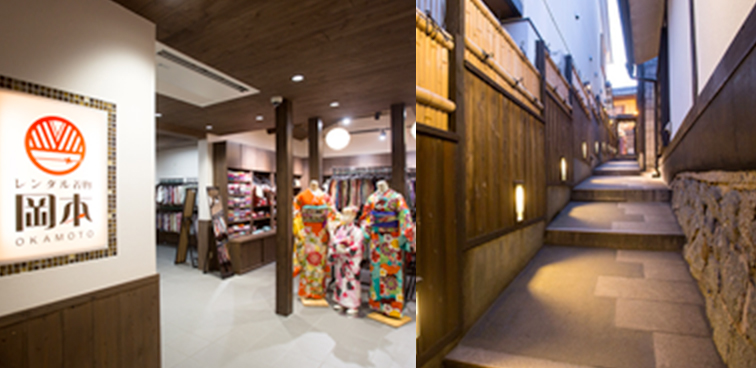
2-237-1-1 Kiyomizu, Higashiyama-ku, Kyoto 605-0862
Tel. +81-75-525-7115 / FAX +81-75-533-8960 / E-mail kiyomizuzaka@okamoto-kimono.com
Nearest stop: City Bus Kiyomizumichi stop
Rental Kimono Okamoto Main Shop
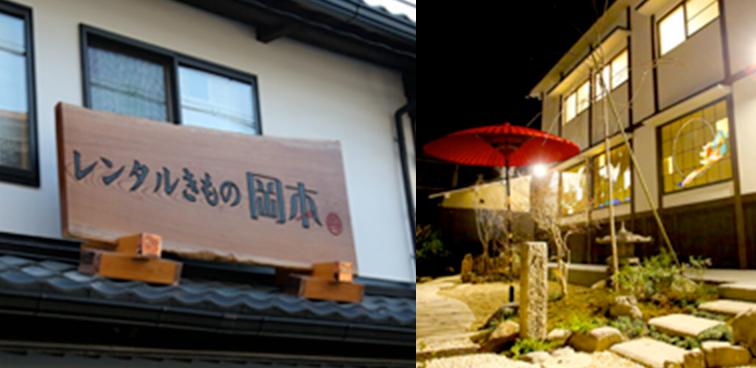
6-546-8 Gojohashihigashi, Kyoto Higashiyama-ku, Kyoto 605-0846
Tel. +81-75-532-1320 /Fax +81-75-532-1480 / E-mail honten@okamoto-kimono.com
Nearest stop: City Bus Gojozaka Stop
Rental Kimono Okamoto Yasaka Jinja Shop
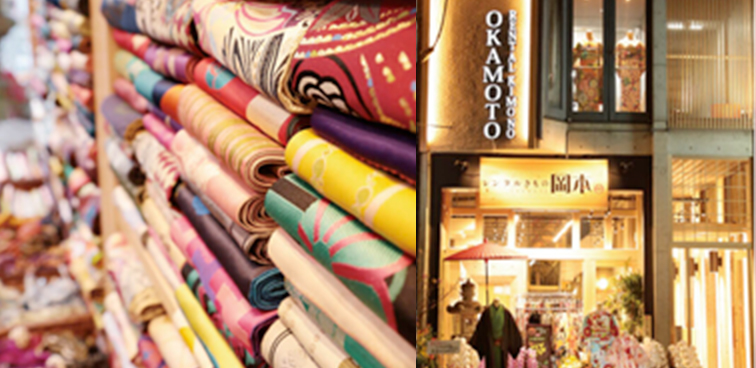
301-1 Gioncho, Higashiyama-ku, Kyoto 605-0073
Tel. +81-75-532-0510 / FAX +81-75-532-0511 / E-mail yasakajinja@okamoto-kimono.com
Nearest stop: City Bus Gion Stop
You can read a feature story about our store, Kyoto and kimono.
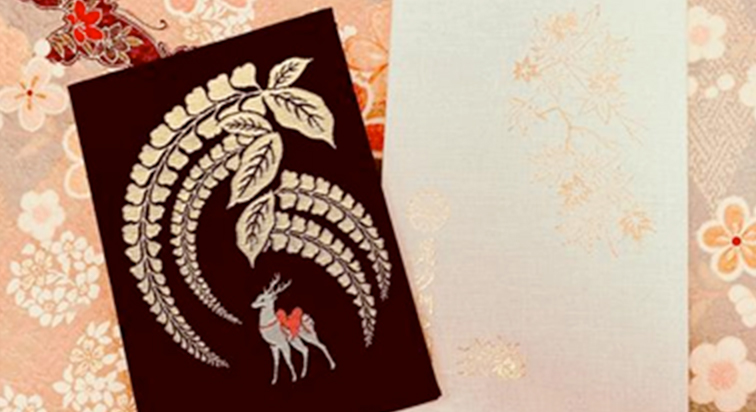
We are introducing various information on proper way of choosing kimono and others to match. Also you can access to our articles about regional, sightseeing information of Kyoto you can refert to before travelling to Kyoto.
You can view articles about kimono all written by us.
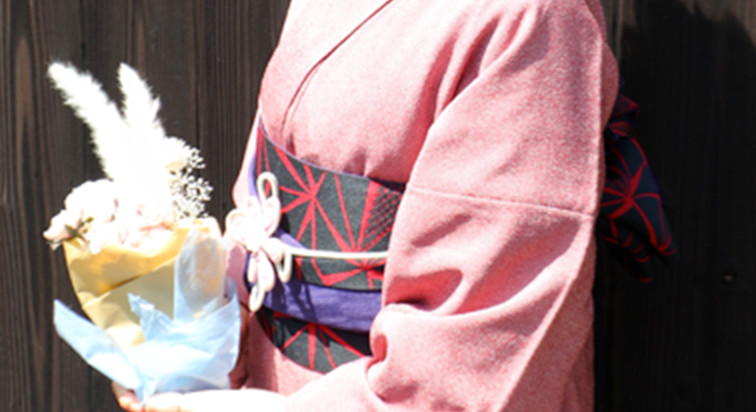
It features various articles about kimono such as history, manner, common sense and a proper way of matching kimono. They will add fun to your going out in kimono.
















